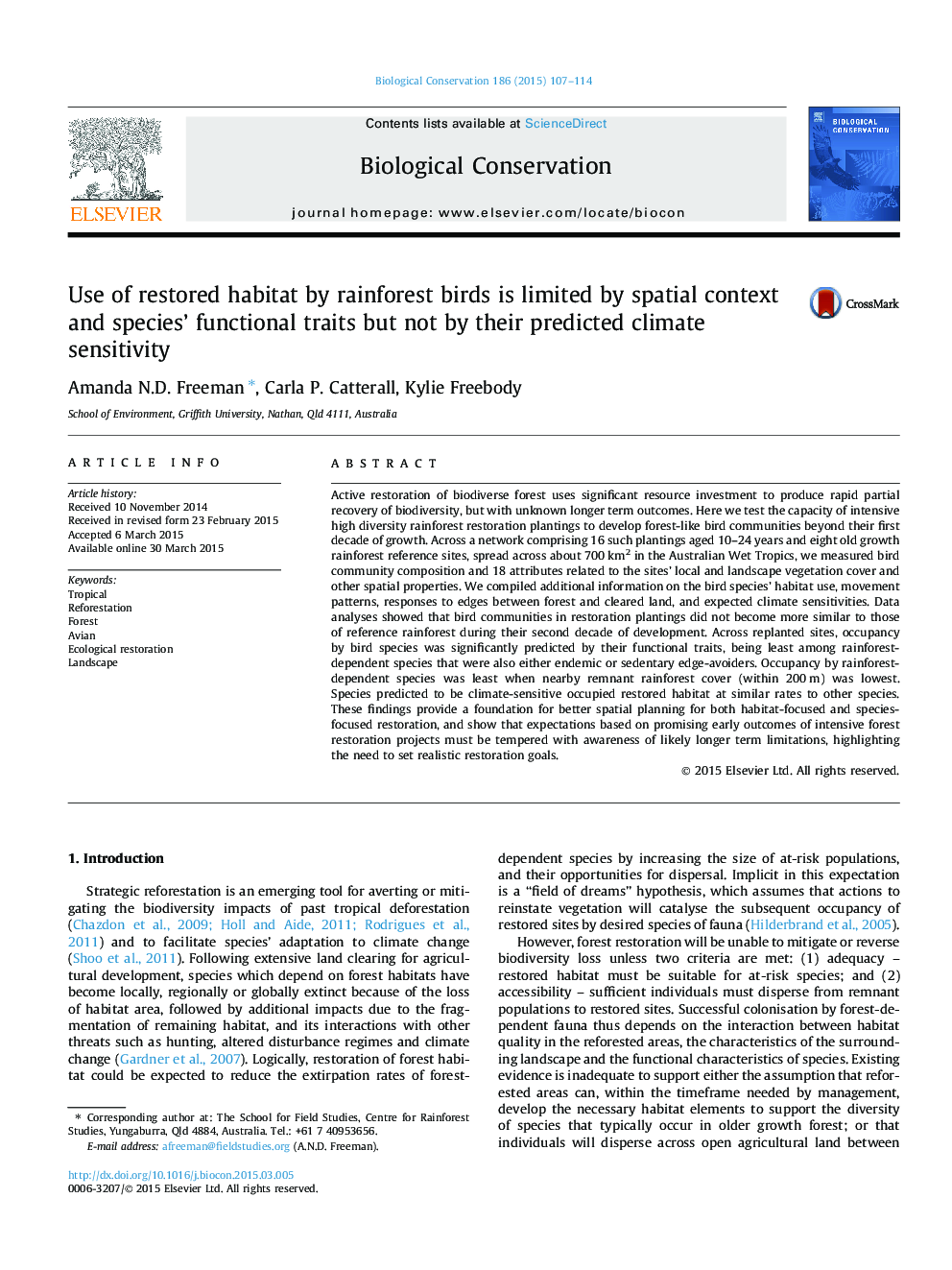| کد مقاله | کد نشریه | سال انتشار | مقاله انگلیسی | نسخه تمام متن |
|---|---|---|---|---|
| 6299682 | 1617915 | 2015 | 8 صفحه PDF | دانلود رایگان |
- Avifaunal recovery virtually stalled in the second decade after site establishment.
- Restoration site occupancy is significantly predicted by species' functional traits.
- Rainforest-dependents' site occupancy highest when nearby rainforest cover highest.
- Predicted climate-sensitive species' site occupancy similar to other species.
- Species' traits and site context may limit biodiversity recovery in restoration.
Active restoration of biodiverse forest uses significant resource investment to produce rapid partial recovery of biodiversity, but with unknown longer term outcomes. Here we test the capacity of intensive high diversity rainforest restoration plantings to develop forest-like bird communities beyond their first decade of growth. Across a network comprising 16 such plantings aged 10-24Â years and eight old growth rainforest reference sites, spread across about 700Â km2 in the Australian Wet Tropics, we measured bird community composition and 18 attributes related to the sites' local and landscape vegetation cover and other spatial properties. We compiled additional information on the bird species' habitat use, movement patterns, responses to edges between forest and cleared land, and expected climate sensitivities. Data analyses showed that bird communities in restoration plantings did not become more similar to those of reference rainforest during their second decade of development. Across replanted sites, occupancy by bird species was significantly predicted by their functional traits, being least among rainforest-dependent species that were also either endemic or sedentary edge-avoiders. Occupancy by rainforest-dependent species was least when nearby remnant rainforest cover (within 200Â m) was lowest. Species predicted to be climate-sensitive occupied restored habitat at similar rates to other species. These findings provide a foundation for better spatial planning for both habitat-focused and species-focused restoration, and show that expectations based on promising early outcomes of intensive forest restoration projects must be tempered with awareness of likely longer term limitations, highlighting the need to set realistic restoration goals.
Journal: Biological Conservation - Volume 186, June 2015, Pages 107-114
